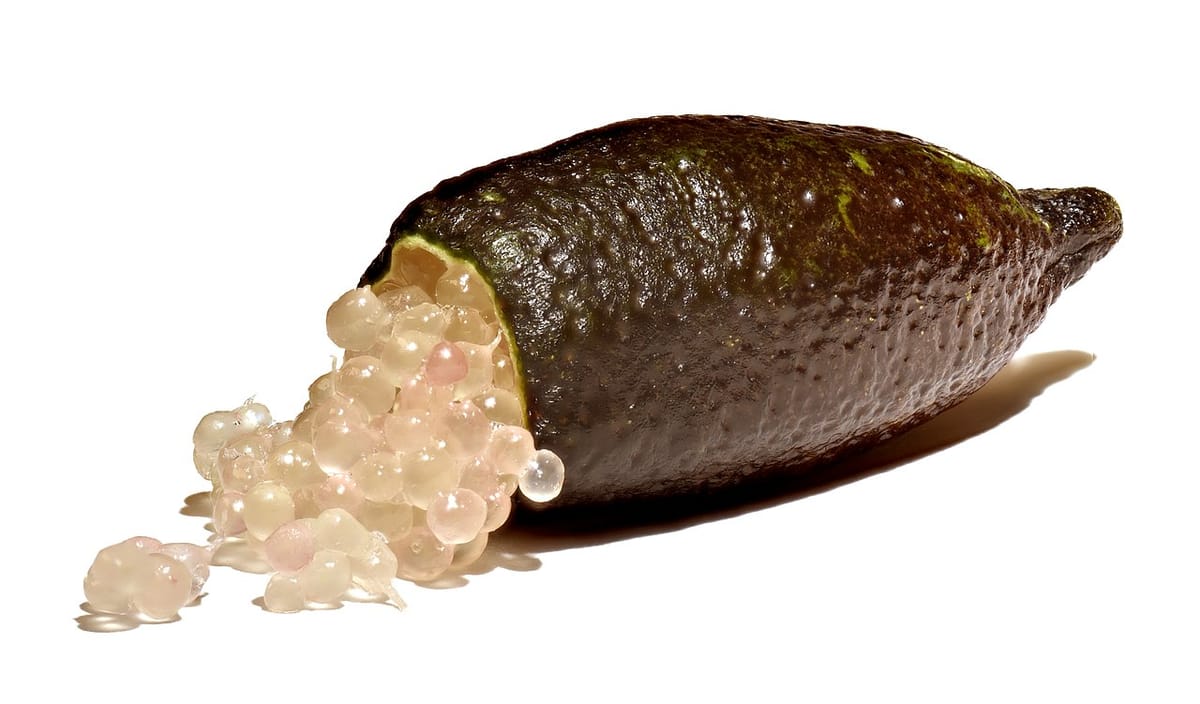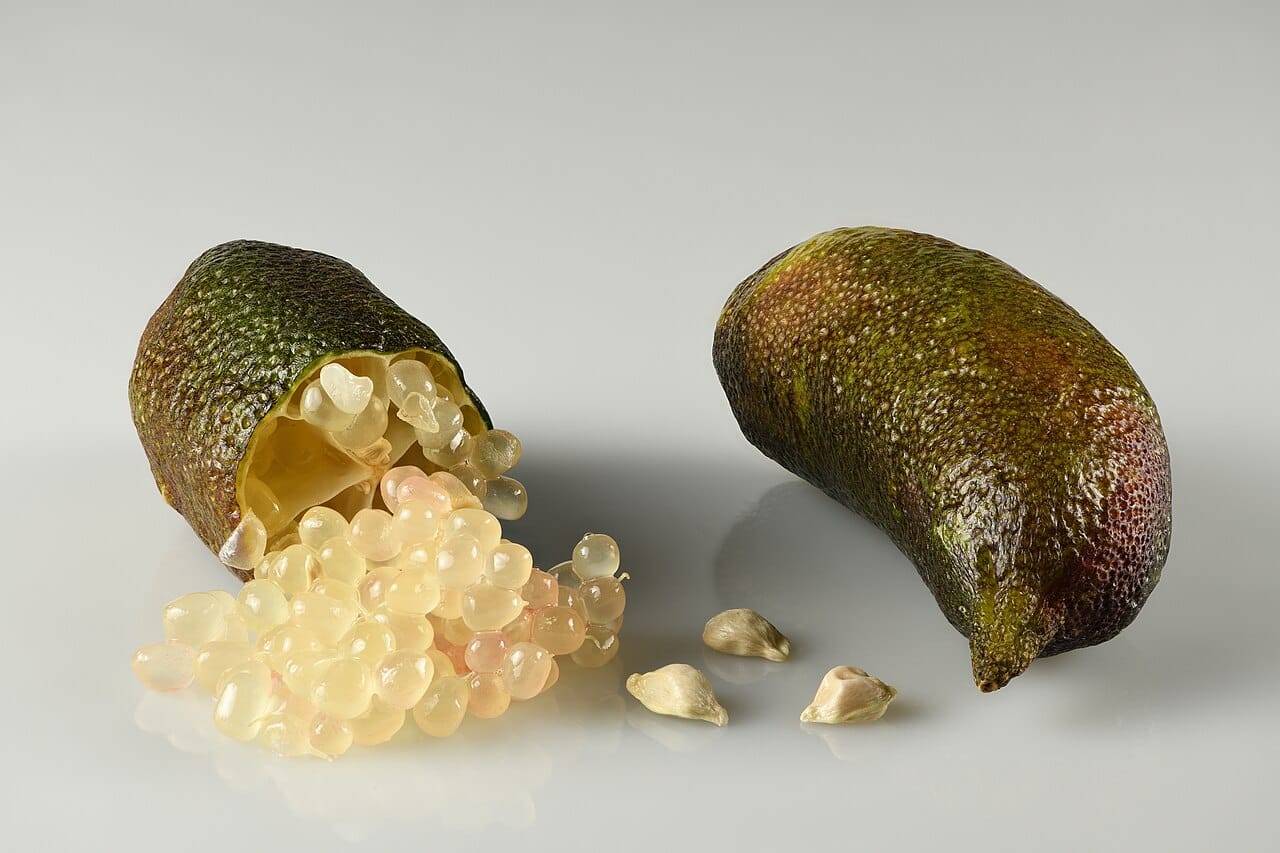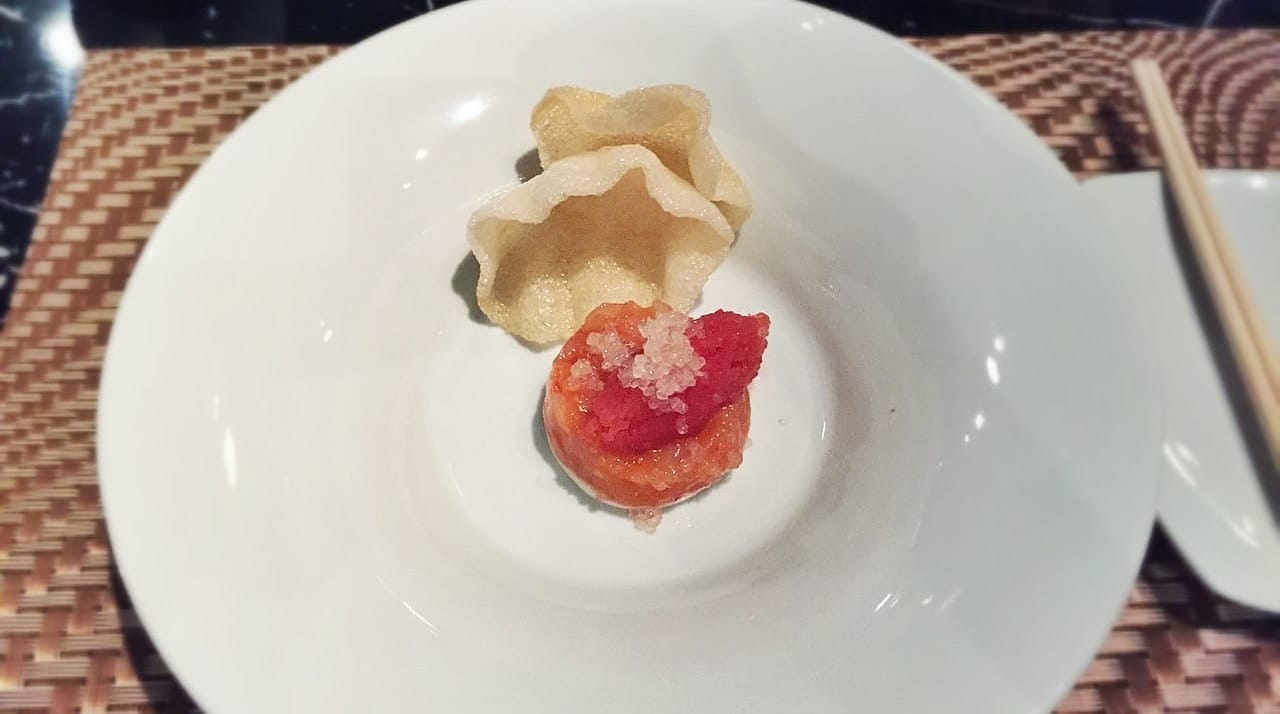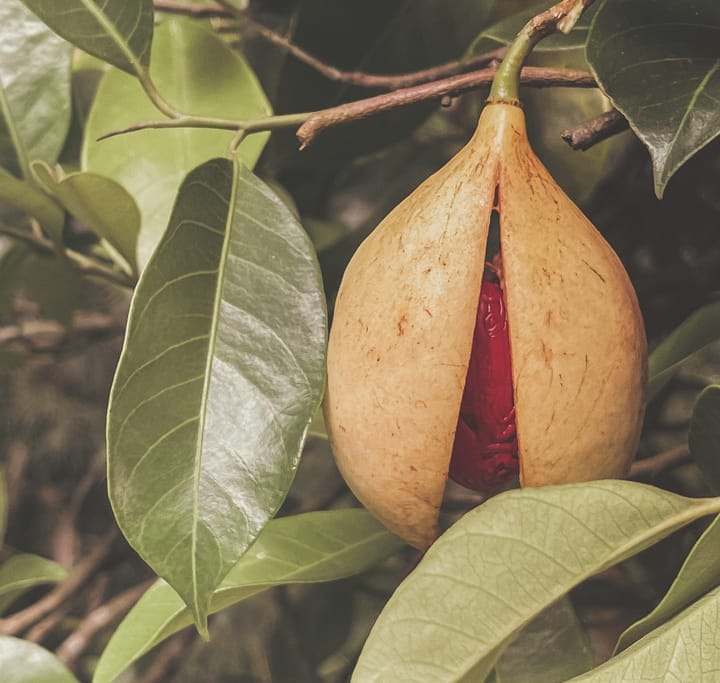Finger Lime: The Luxurious Citrus Caviar Redefining High-End Cuisine
Discover finger limes, the 'citrus caviar' taking luxury dining by storm. These Australian gems contain caviar-like pearls that burst with tangy flavor, transforming dishes at Michelin-starred restaurants.

In the world of luxury ingredients, where Beluga caviar and white truffles reign supreme, a tiny Australian native fruit is making waves among top chefs and culinary connoisseurs.
Meet the finger lime (Microcitrus australasica), aptly nicknamed "citrus caviar" for its pearl-like vesicles that burst with tangy flavor.
This elongated citrus fruit, commanding prices of $60 - $80 per pound in specialty markets, has become one of the most sought-after ingredients in high-end cuisine.
What Are Finger Limes?

Finger limes are small, elongated citrus fruits native to Australia that measure just 2-3 inches in length and resemble tiny pickles or fingers – hence their name.
What sets them apart from every other citrus fruit on the planet is their interior structure.
Instead of traditional citrus segments, finger limes contain hundreds of tiny, firm juice vesicles that look remarkably like caviar pearls.
When you bite into these pearls, they burst in your mouth, releasing an intense lime flavor that's both familiar and completely unique.
These extraordinary fruits grow on thorny shrubs or small trees in the rainforests of eastern Australia, where they've evolved over millions of years in isolation from other citrus species.
Available in a rainbow of colors – from green and yellow to pink, red, and even dark purple – each variety offers subtle flavor variations while maintaining that signature caviar-like texture that has captivated the culinary world.
The Rising Demand Revolution
What started as a curiosity in Australian restaurants in the 1990s has exploded into a global culinary phenomenon.
The demand for finger limes has increased by over 500% in the past decade, driven by Instagram-worthy dishes and adventurous diners seeking new experiences.
Michelin-starred restaurants from New York to Tokyo now feature finger limes as a signature ingredient, with chefs like René Redzepi of Noma and Grant Achatz of Alinea incorporating them into their tasting menus.
This surge in popularity has created a perfect storm of high prices and limited availability.
While Australian growers struggle to keep up with demand, small farms in California and Florida have started cultivation, though their combined output barely makes a dent in the global appetite for these "citrus pearls."
The Origins of Nature's Citrus Pearls
Native to the rainforests of Australia's eastern coast, finger limes have been a well-kept secret of Aboriginal peoples for thousands of years.
Growing wild in the understory of Queensland and New South Wales rainforests, these remarkable fruits evolved in isolation, developing their unique caviar-like texture unlike any other citrus in the world.
The Aboriginal peoples of Australia have long treasured finger limes, using them not only as a food source but also for medicinal purposes.
They would harvest the fruit from wild trees, which can grow up to 20 feet tall in their natural habitat, though cultivated varieties are typically kept smaller for easier harvesting.
It wasn't until the 1990s that finger limes began attracting international attention. Australian horticulturists recognized their commercial potential, and pioneering chefs started experimenting with these "fruit pearls" in fine dining establishments.
Today, finger limes are cultivated in small quantities in California, Florida, and other subtropical regions, though Australian-grown specimens remain the gold standard.
Fascinating Facts About Finger Limes
- Ancient Heritage: Finger limes are one of the oldest citrus varieties on Earth, predating common oranges and lemons by millions of years.
- Natural Resistance: These hardy fruits have natural resistance to citrus diseases that plague conventional citrus crops, making them valuable for agricultural research.
- Nutritional Powerhouse: Finger limes contain three times more vitamin C than mandarins and are packed with folate, potassium, and vitamin E.
- Color Psychology: The color of the skin doesn't always match the pearls inside – a green finger lime might contain pink pearls, creating delightful surprises for diners.
- Wild Varieties: Scientists have identified over 20 wild varieties in Australian rainforests, each with unique flavor profiles that have yet to be commercialized.
- Celebrity Chef Favorite: Gordon Ramsay calls them "the most exciting ingredient from Australia," while Heston Blumenthal uses them in his molecular gastronomy creations.
- Zero Waste: Every part of the finger lime is usable – the skin can be candied or zested, and the seeds are being studied for their essential oil content.
Why Finger Limes Command Premium Prices
Several factors contribute to the eye-watering price tag of finger limes, making them a true luxury ingredient:
Limited Growing Regions
Finger limes require very specific growing conditions – subtropical climates with high humidity and well-draining soil. They're notoriously difficult to cultivate outside their native habitat, limiting global production.
Slow Growth and Low Yield
These trees take 5-7 years to begin producing fruit, and even mature trees yield relatively small harvests. A single tree might produce only 20-40 pounds of fruit annually, compared to hundreds of pounds from conventional citrus trees.
Delicate Harvesting Process
The fruit must be hand-picked at peak ripeness, as mechanical harvesting would damage the delicate vesicles inside. The harvest window is narrow – just a few weeks – requiring careful monitoring and immediate processing.
Short Shelf Life
Fresh finger limes have a shelf life of only 2-3 weeks when properly stored, making transportation and distribution challenging and expensive. This perishability adds significantly to their cost and exclusivity.
Flavors and Textures
What makes finger limes truly extraordinary is their unique sensory experience.
When you slice open the cylindrical fruit, you're greeted with hundreds of tiny, glistening pearls that resemble premium caviar.
The flavor profile is complex and sophisticated:
- Initial burst: Sharp, intensely tart citrus flavor more concentrated than conventional lime
- Mid-palate: Subtle floral notes with hints of lemon and grapefruit
- Finish: Clean, refreshing acidity with slight herbal undertones
The texture is equally remarkable. Each vesicle pops between your teeth, releasing its juice in a sensation that's been described as "citrus fireworks" or "flavor explosions." This textural element adds a playful, luxurious dimension to any dish.
Finger limes come in various colors, each with subtle flavor variations:

- Green varieties: Classic lime flavor with sharp acidity
- Pink and red varieties: Slightly sweeter with berry undertones
- Yellow varieties: Milder, more lemon-like flavor
- Purple varieties: Complex flavor with slight bitterness
Culinary Applications in Fine Dining

Top chefs around the world have embraced finger limes as a versatile ingredient that adds both visual appeal and flavor complexity to their creations:
Seafood Pairings
The natural affinity between citrus and seafood makes finger limes perfect for:
- Raw preparations: Scattered over oysters, sashimi, and crudo
- Caviar service: Mixed with traditional caviar for a citrus twist
- Grilled fish: As a finishing touch on salmon, halibut, or sea bass
Cocktail Innovation
Mixologists use finger lime pearls to create stunning drinks:
- Champagne cocktails: Floating pearls add elegance and citrus notes
- Molecular mojitos: Replacing traditional lime with finger lime caviar
- Premium margaritas: As a rim garnish or mixed into the drink
Dessert Applications

Pastry chefs incorporate finger limes into:
- Tarts and pavlovas: As a textural contrast to smooth custards
- Sorbets and ice creams: Folded in for burst of flavor
- Chocolate pairings: Dark chocolate and finger lime create sophisticated flavor profiles
Modern Cuisine Techniques
- Molecular gastronomy: The natural spherification makes them perfect for modernist dishes
- Fusion cuisine: Particularly popular in Asian-fusion restaurants
- Garnishing: Adding luxury appeal to everything from salads to meat dishes
A Worthy Addition to Any Luxury Pantry
In the pantheon of expensive ingredients, finger limes have earned their place through rarity, unique sensory properties, and culinary versatility.
Despite their premium price, the transformative effect they bring to dishes—both visually and in flavor—justifies the investment for special occasions.
Unlike many luxury ingredients requiring extensive preparation, finger limes are refreshingly simple to use: cut, squeeze, and let the citrus caviar work its magic.
For professional chefs and home cooks alike, they offer an accessible gateway into high-end cuisine.
As diners increasingly seek novel experiences, finger limes perfectly embody the intersection of luxury, sustainability, and innovation—proving that nature's most extraordinary treasures often come in the smallest packages.


